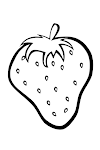Drawing a flying bird can be a graceful and expressive exercise. Here's a step-by-step guide to help you draw a simple but dynamic flying bird.
Stage 1: Body Shape Initially, a little oval body of the bird was drawn. This will be the center of your bird. Stage 2: Add a header Toward the finish of the oval, draw a somewhat more modest circle for the bird's head. Place it at a slight point to show development. Stage 3: The face is moved Broaden a short rope from the head. The snout can be straight or marginally bent depending upon the sort of bird you need to draw. Stage 4: Make the wings Two long, oval lines stretch out from the sides to demonstrate wings. The wings of birds are normally extended and somewhat lifted back in flight. Stage 5: Draw the tail The tail is short and pointed at the back. Tail straight or somewhat bent. Stage 6, add the plumes Draw some straightforward quill subtleties on the wings and tail. Utilize short, bent lines to address the elements. Center around the tips of the wings and tail. Stage 7: Close the eye Draw a little circle around the front of the head for the higher. This will restore your bird. Stage 8: Connect the legs Assuming your legs are open birds, define slim boundaries dangling from the body. Stage 9: Foster the structure Tidy up the general state of the bird, fitting the wings, tail, and body as the need might arise. Check the decent extents out. Stage 10: Layout Frame the passages with a pen or a hazier pen to frame the last lines. This will give you alter the clearness and stick out. Stage 11: Erase superfluous lines Cautiously delete any pointless highlights or covering lines to tidy up the drawing. Stage 12: Add Subtleties (Discretionary) You can add extra subtleties, for example, extra plumes, territory, or mists to improve the scene. On the off chance that you're going for a negligible look, keep it straightforward. Stage 13: Variety (Discretionary) Add tone to the framework assuming you like. If you are adding a scene, use earth tones for the bird's body, blue for the sky, and green for the ground or trees. Make sure to analyze and have a great time simultaneously. You can explore different avenues regarding various kinds of birds or make novel and fascinating drawings of flying birds.








0 Comments